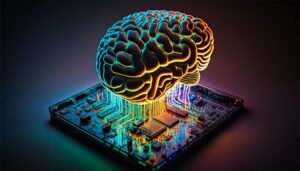In today’s world of technology, the terms gadget and device are often used interchangeably, but there is a difference between the two. While they both refer to electronic items, they have different characteristics and uses. In this article, we will explore the difference between a gadget and a device.
A gadget is a small and innovative device that is designed to perform a specific function. It is often seen as a novelty item and is usually used for entertainment or recreational purposes. Examples of gadgets include fitness trackers, virtual assistants, and smartwatches. They are typically portable, easy to use, and often rely on connectivity to function.
On the other hand, a device is a broader term that refers to any electronic item that performs a specific function or task. Devices can range from simple household appliances such as a toaster or blender to more complex items such as a computer or a smartphone. Unlike gadgets, devices are often essential tools that are used for productivity or communication purposes.
One key difference between a gadget and a device is their level of functionality. While gadgets are designed to perform a specific function, devices often have multiple functions and are more versatile. For example, a smartphone is considered a device because it can be used for communication, productivity, entertainment, and more, while a fitness tracker is a gadget that is designed specifically to track physical activity.
Another difference between gadgets and devices is their level of complexity. Gadgets are often simpler in design and function compared to devices, which can have a wide range of features and capabilities. For example, a virtual assistant such as Amazon Alexa is a gadget that performs a specific function, while a laptop is a device that can perform multiple functions, including running various software applications and connecting to the internet.
Connectivity is another factor that sets gadgets and devices apart. Gadgets often rely on connectivity to function, whether it’s through Wi-Fi, Bluetooth, or cellular networks. Devices, on the other hand, may have connectivity features but are not solely reliant on them to function. For example, a smartwatch is a gadget that requires connectivity to a smartphone to function fully, while a laptop can still perform basic functions without an internet connection.
In summary, the key difference between a gadget and a device is their level of functionality, complexity, and reliance on connectivity. Gadgets are often portable and designed for specific functions, while devices are more versatile and can perform multiple functions. While the terms may be used interchangeably in casual conversation, understanding the difference between the two can help in choosing the right electronic item for a particular need or purpose.
It’s worth noting that the line between gadgets and devices can be blurry, and the distinction between the two can be subjective. For example, a smartwatch can be considered a gadget or a device depending on how it’s used and the specific features it has. Regardless, understanding the differences between gadgets and devices can help in making informed decisions when it comes to choosing electronic items for personal or business use.







Be First to Comment